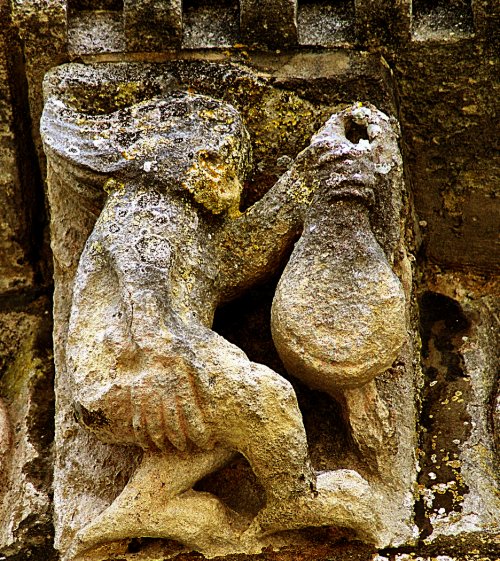
Twelve images of the Sin of
WEALTH

Saint-Fort-sur-Gironde: Mr Moneybag displaying his wealth.
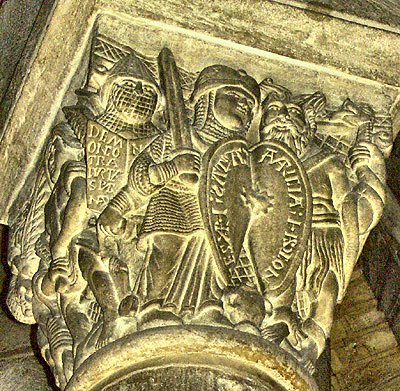
From the Psychomachia (War between Virtues and
Vices) series of capitals at Notre-Dame-du-Port, Clermont-Ferrand:
Generosity (Caritas) with helmet, mail and sword challenges Greed-for-Wealth
(Avaritia)
who is portrayed paradoxically as a Wild Man.
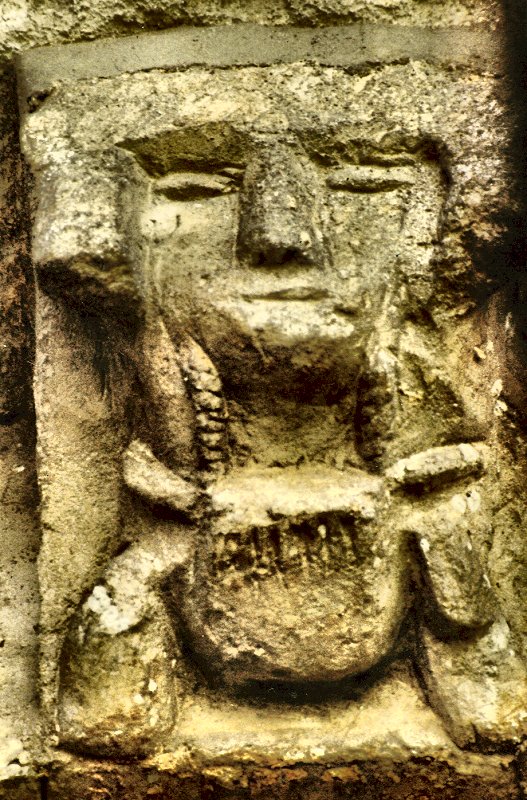
A much cruder corbel-sculpture at Graimbouville (Seine-Maritime)

Sainte-Croix, Bordeaux (with gold rings) (before cleaning).
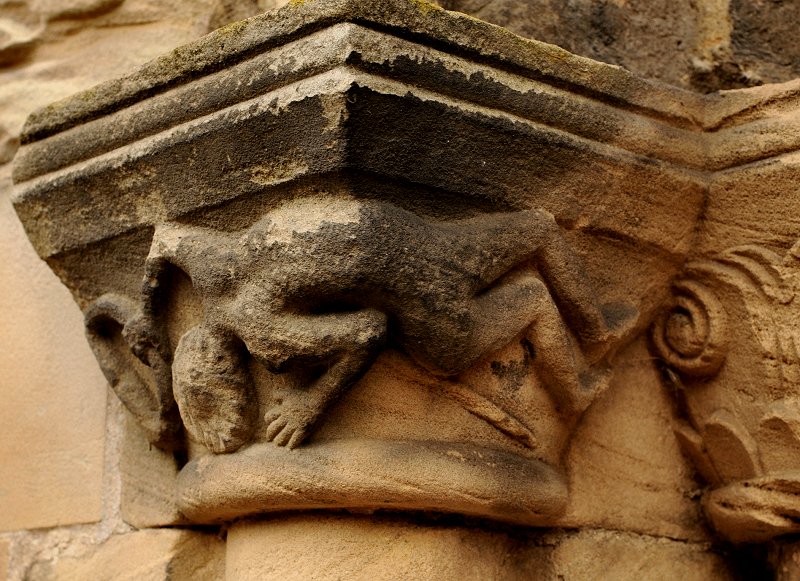
Rich man (carrying a single gold ring) falling into Hell, Melbourne (Derbyshire)

Lucheux (Somme)
Saint-Parize-Le-Châtel (Nièvre) - a wonderful
snake whispers obscenities into the ear
of a naked moneylender with two dug-like (or a pair of scrotum-like) bags of
gold.
The sins of Concupiscentia and Avaritia were perhaps combined in the sin of
Luxuria.
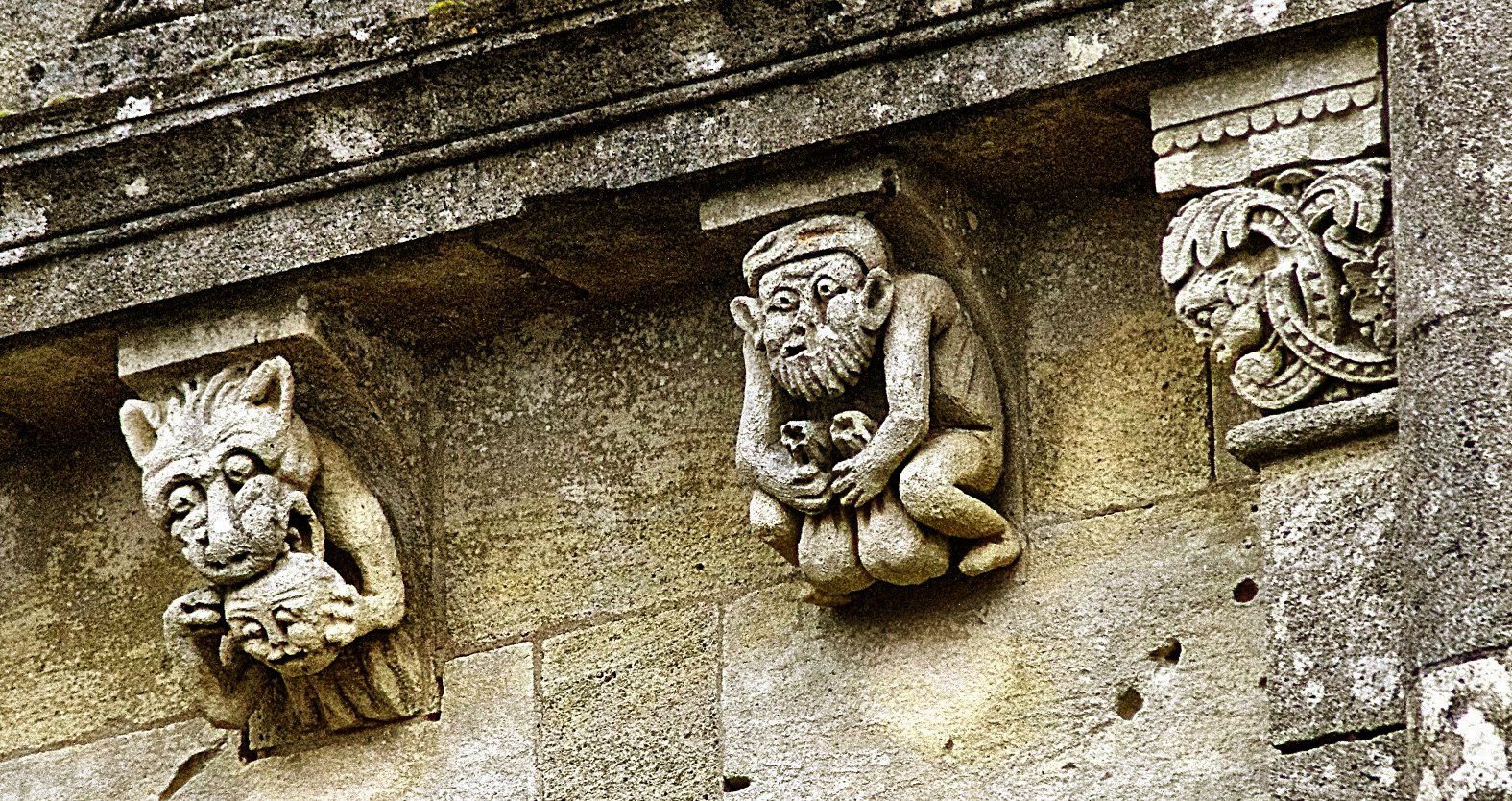
The phallic resonance is more obvious at St. Philippe d'Aiguille (Gironde).
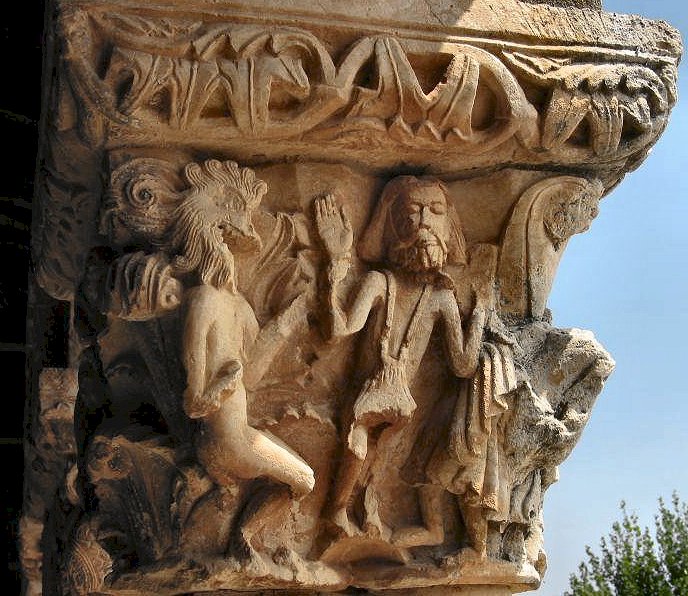
Rebolledo de la Torre (Burgos):
A splendid lion-maned devil taunts the rich man in Hell.
|
Male exhibitionist with moneybag, Domfront (Orne)
France:
While usury is not condemned as such in the New Testament, Jesus was obviously concerned about the exploitation of the poor by the rich, about continuing, crippling debt and its remission. Moneylenders and wealth are both condemned in the Gospels, and money itself denounced byJames and Timothy. The chief and most certain source is wealth is by lending money - whether to the poor or to 'entrepreneurs', 'venture capitalists' or to already-rich companies and corporations. The early 'Church Fathers' condemned Usury as the opposite of Charity, Augustine regarded it as a crime, and the Council of Carthage banned it in 345 AD. The Third Lateran Council of 1179 denied moneylenders Christian burial. In 1524 Martin Luther condemned usury as grossly contrary to God's Word - but just 20 years later, Calvin, the Whited Sepulchre of Geneva, started to write apologies for money-lending. From that point modern Capitalism began to take over the world. Today, even 'Bible-based' Christians see nothing wrong with the charging of interest - which they would call making money make money. They continually and ever-more irrelevantly condemn private behaviour such as harmless homosexuality on the basis of dubious interpretation of very few texts, but conveniently ignore the prohibition of usury in both Old and New Testaments... They are akin to the anti-Darwinists who are the most avid exponents of "Social Darwinism".
|
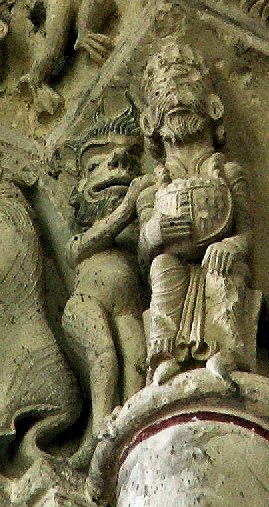
A fine capital at Cunault (Maine-et-Loire) showing a devil
claiming
a king or prince with impressive moneybag.
photo by Julianna Lees
And an amazing depiction of the subject at Tarragona in Spain, which links this motif with tongue-stickers, mouth-pullers and Gorgons.

The theme of wealth, greed, and ungenerosity features large
on the left side of the famous portal at Moissac (Tarn-et-Garonne).
Below the most descriptive of all the depictions of the parable of Dives
and Lazarus
is this panel. On the left, a tongue-sticking demon sits on the shoulders of
a rich, beautifully-dressed aristocrat seated on a chair
and holding a large bag (grey with white staining). The devil's talons grip
his forehead.
On the right - Scene 2 - another devil sits on his shoulders while gripping
the bag.
The rich., vainglorious man is now a pauper and will be a pauper in Hell.
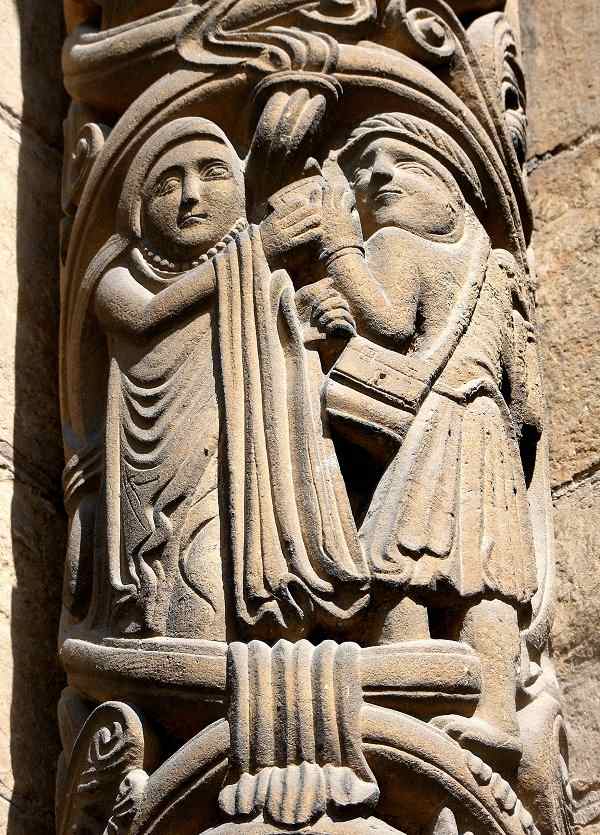
On the W door of Lincoln Cathedral in England, a rich woman
wearing pearls is handing a box (containing jewels ?)
to a rich man with a satchel, who may be a moneylender or a tax-collector.